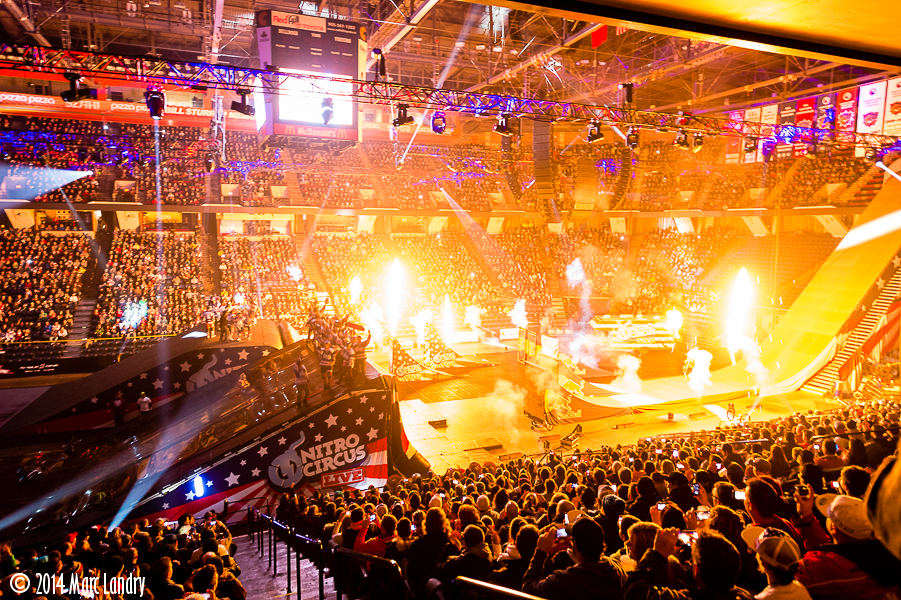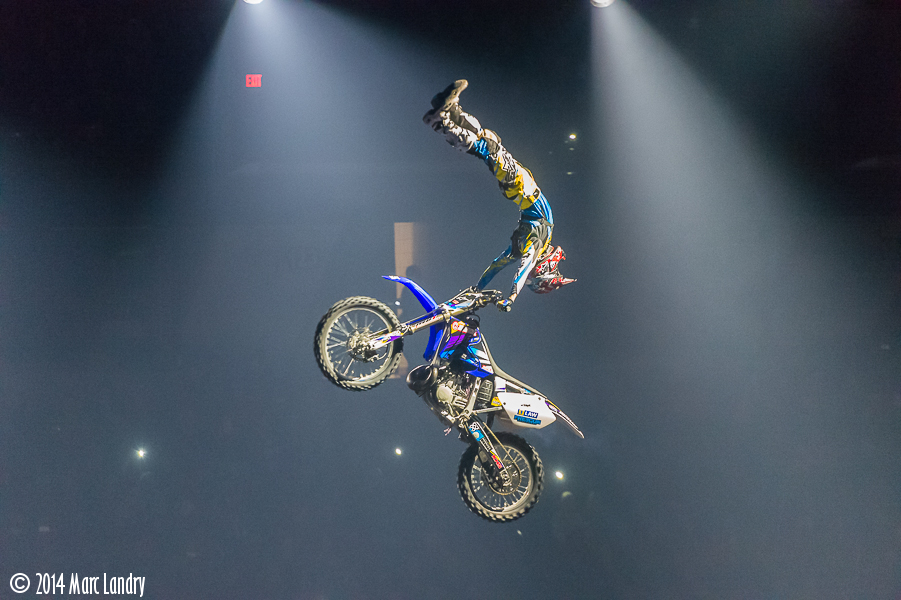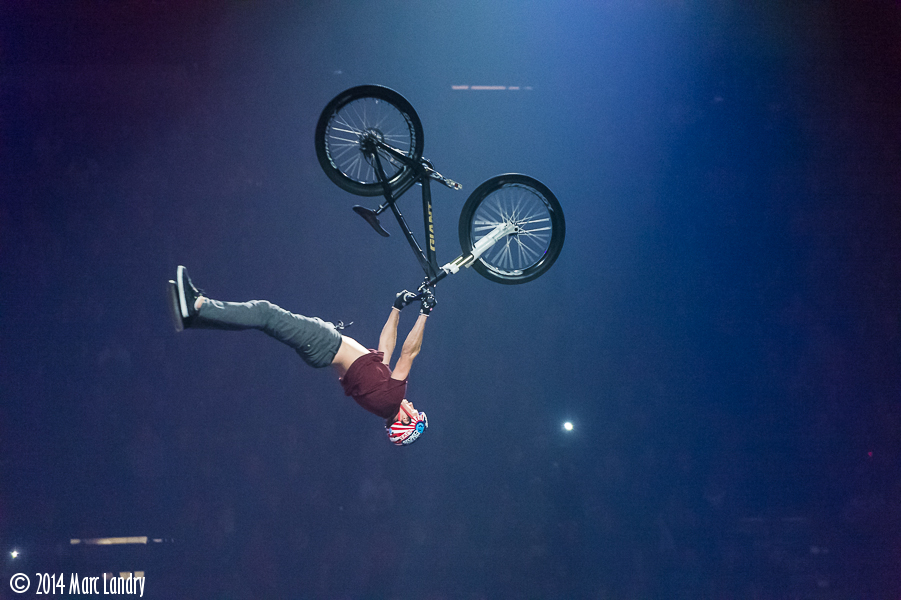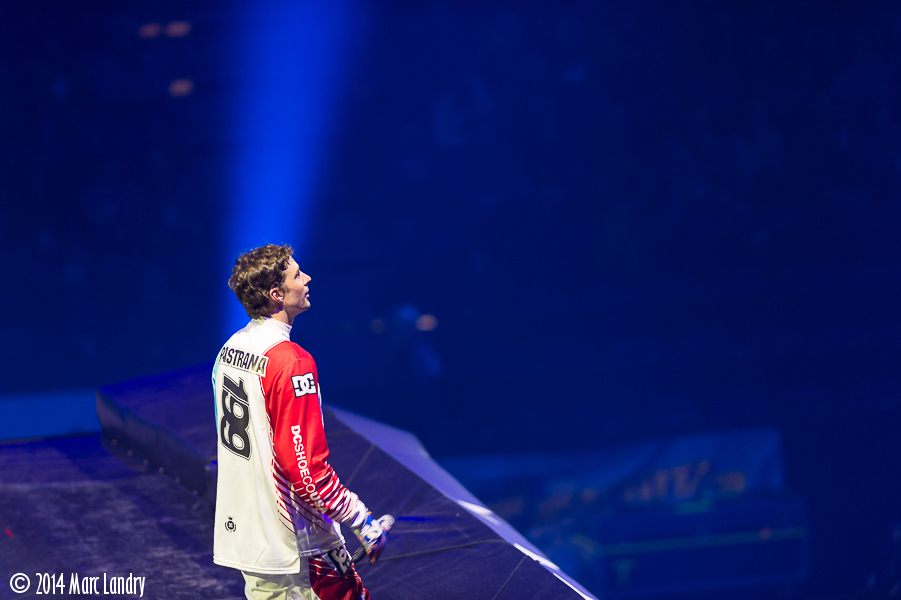Shooting The First Stop of The Nitro Circus Live Tour in Hamilton
This past weekend I was fortunate enough to get out to shoot the first stop of the Nitro Circus Live North American tour at Copps Coliseum in Hamilton.
Nitro Circus was looking for a shooter and I was recommended to them by my friend and respected Canadian motocross editor/photographer, Allison Kennedy Davies. I spoke with the fine folks at Nitro Circus but given the last minute nature of the assignment we were not able to finalize the arrangements in time for me to shoot the show for them. Covering a show like this has a lot of moving parts and any time you’re shooting in an arena you are bound to have some challenging light.
I still got out to shoot the show for Riding Feels Good however and had a blast. You can read my story and see over a hundred images from the event here: http://www.ridingfeelsgood.com/nitro-circus-live-drops-the-hammer-on-the-first-stop-of-its-north-american-tour/ Photography-wise, I can say that this was without question, some of the most challenging light I have ever shot in.
Given some more time to prepare, this would have been the kind of shoot where I would have wanted to mount a couple of my Elinchrom Ranger heads in the catwalks and fire them from anywhere in the arena with some Pocket Wizards. The event floor was not really an option for lights on sticks due to safety reasons and limited floor space. This would have also meant that the strobes were pointing up at the subjects, combating the spots from above and casting ugly cross shadows. Not really a fan favourite either, getting popped by big studio strobes. Tall stands with piles of sandbags? Maybe, but still not the best option for the same reasons. Available light was the way to go on this one. Available is the operative word here.
It was dark, night-vision kinda dark. This stadium made shooting Supercross at the Rogers Center look like a cake walk. To the naked eye it always seems light enough, doable. “I got this”, you tell yourself in your bright-eyed, photo-keener inner voice. But when you look through that viewfinder and start asking the camera for some decent shutter speeds, it’s a whole other story. If a camera felt pain, this would hurt it. I was shooting beyond wide open. What is wide open? I would define wide open for sports to be 1/1000th, f/2.8 at ISO 4000, and that is pushing it. 1/800th would be the lowest I would ever drop my shutter for fast moving action and 6400 the highest I would push my ISO. Sure there are plenty of situations where you can get by with less, but not here. These settings on the D4 still produce a better image than was attainable on a camera body at ISO 800 only a few short years ago – in the primitive, pre-D3 era. I get plenty of images published at ISO 6400 though and think it’s a pretty exciting time to be a photographer when that is even remotely possible.
The bulk of the images in my report were shot at 1/640th, f/2.8 at ISO 20000, some even higher. So while these images are far from amazing, with lots of noise, this shoot simply would not have been achievable without my D4. Forget it, go home and watch it on TV. There was some skill involved as far as scouting a location that made best use of my less-than-optimal depth of field and timing my shots at peak action, when the athletes were not moving at their highest rate of speed. The biggest challenge however was rolling the dice on exposures. I was out of my exposure comfort zone for certain. I was either going to get back to the studio and be able to work with them or select-all and hit delete.
You will rarely see images from me where the subject is completely bulls-eye in the frame with no context or environment. This is referred to as “guy in the sky” and is a sports photography faux pas. You always want to show the take off and landing for a stunt. There are several reason why I did not do this for every shot in the report. The biggest of which is image quality. With the poor light and smoke from the pyrotechnic show still lingering in the air, I needed to get tight. I had also shown the jumps in other establishing shots so it was not necessary to include them in every subsequent image. Once the jump and venue were documented, it was all about capturing the tricks. I’s also not as crucial with an industrial ramp like this as it would be with a natural feature. You have to ask yourself what the viewer will want to see and make the call as to when it’s ok to break the rules.
You can read in my initial review of the D4 that it’s low light performance and the ability to focus at -2 EV was one of the big attractions for me. I have tested the D4’s performance up to f/8 using teleconverters with great success but this was a pretty epic test of auto focus performance in low light. The system was pushed to it’s limits with the combination of extremely low light and a haze that greatly reduced subject contrast. I used single point AF in continuous servo and just kept the auto focus point on the subject as best I could. Focus Tracking with Lock-On (custom setting a4) was set to off. I had no issues with AF whatsoever.
For this shoot I brought a pair of D4 bodies with a variety of glass: 300mm f/2.8 VRII, 70-200mm f/2.8 VRII, 14-24mm f/2.8, 70-200mm f2.8 and a TC-14E. No way the teleconverter was an option that night, every stop of light was needed. I would have welcomed having my 200mm f/2 along for the ride but was already feeling pretty weighed down and ‘Super-Chub’ as that lens is commonly referred to, is one heavy chunk of glass. It’s got a massive front element to gather the light needed to get you f/2 and it feels like you are carrying a bucket of paint. The tradeoff would have been turfing the 300mm, which could have left me short. I opted to pack it and my 70-200mm to ensure I had my focal lengths covered. There are no do-overs in photography so you learn to work with what-cha got. I also needed to be mobile and be able to quickly and easily navigate my way through the packed stadium.
Even dragging the shutter for a ‘clean’ portrait was barely attainable. I had to slow things down to 1/100 with the 300mm f/2.8 to get decent ISO for any lifestyle type shots. This is where the VRII function on the 300mm was my friend. It’s good practice to have your shutter speed be one over the focal length of your lens, so 1/300th and above was the sweet spot for the 300mm. Without VR, 1/100th can be challenging when hand-holding a long lens. For opening ceremonies I dragged the shutter down to 1/10th to soak in all the light I could.
Any time I get to push the equipment and my own limits, I am happy. This was a fun shoot and a great experience. Watch for a few of these images in upcoming issues certain big US mag. I’ll post them here when they are published.
As I write this, I have been informed that Nikon is currently working on a D4S. Details are not available yet but a mockup will be at the upcoming CES show.



